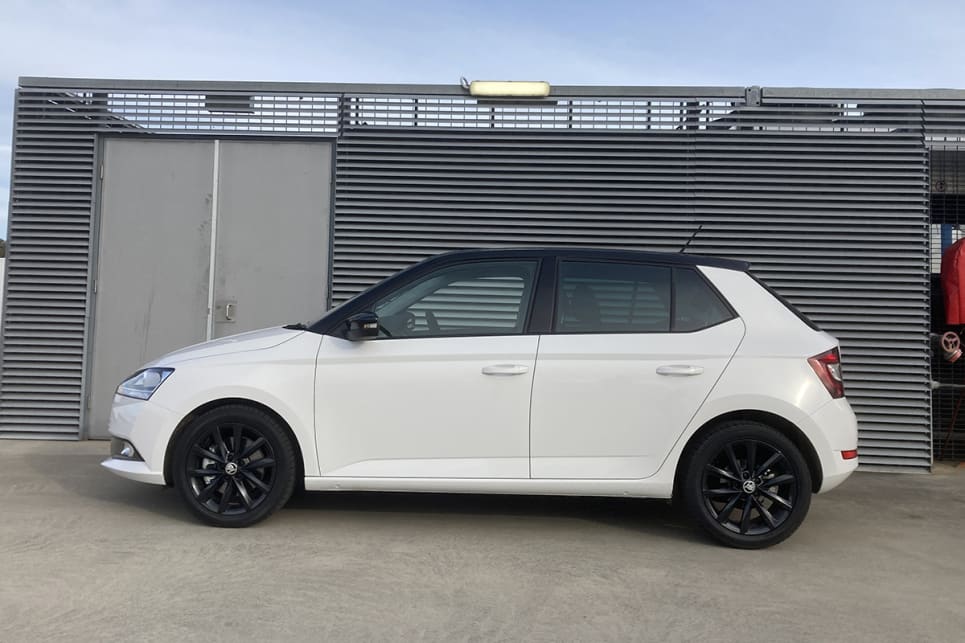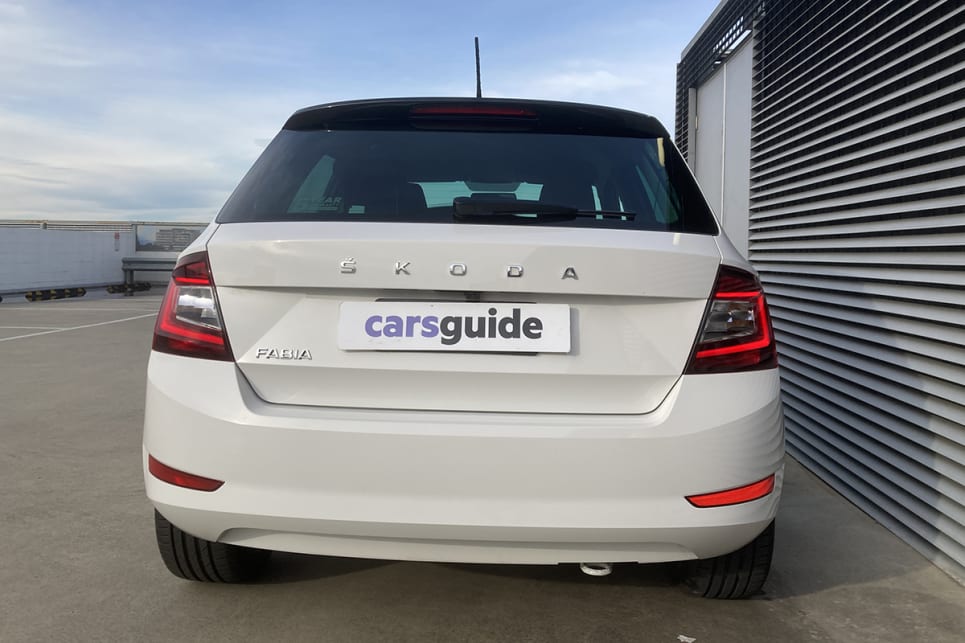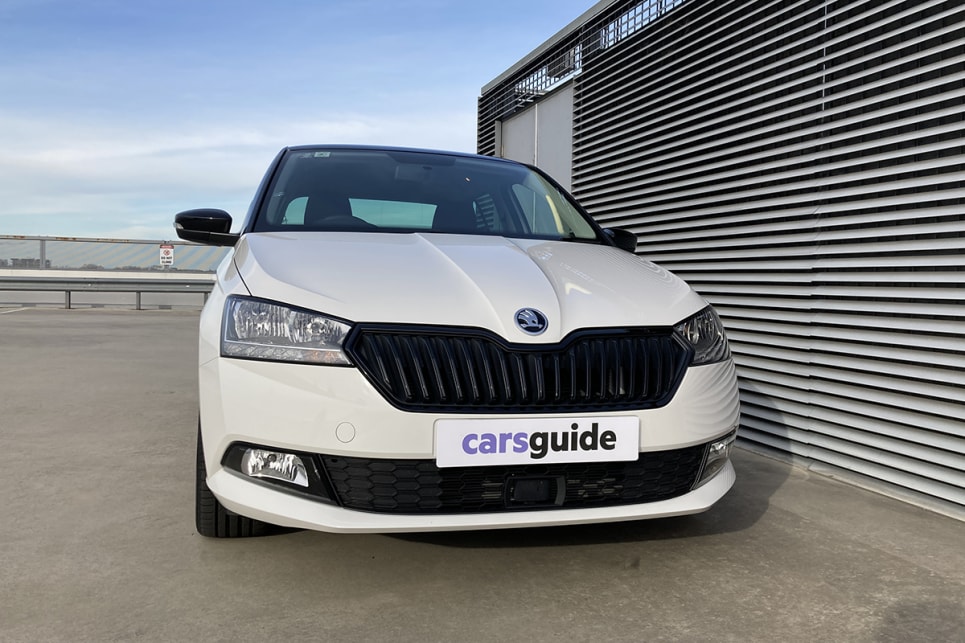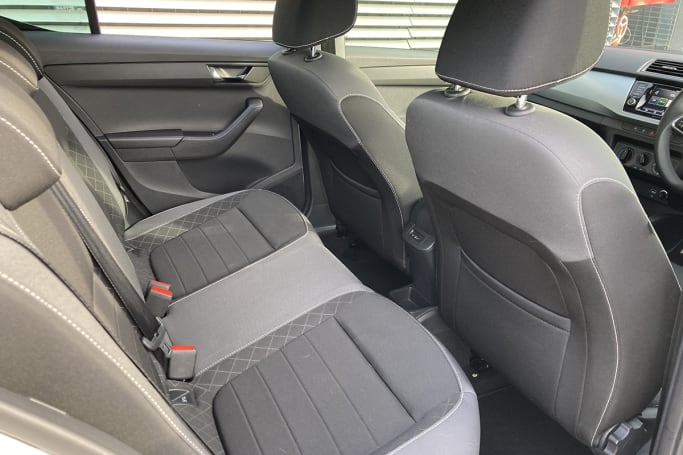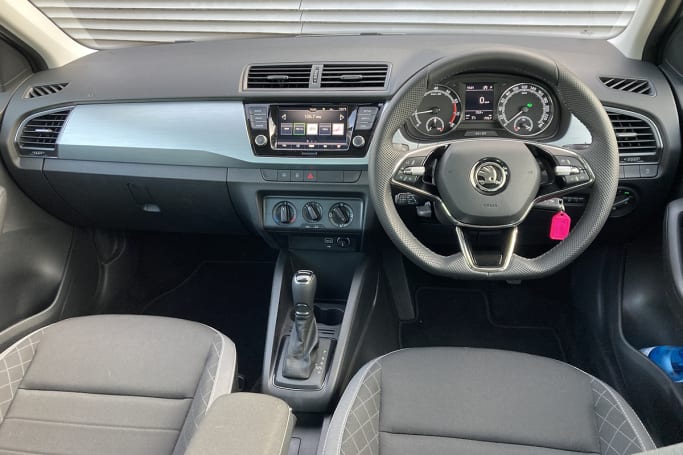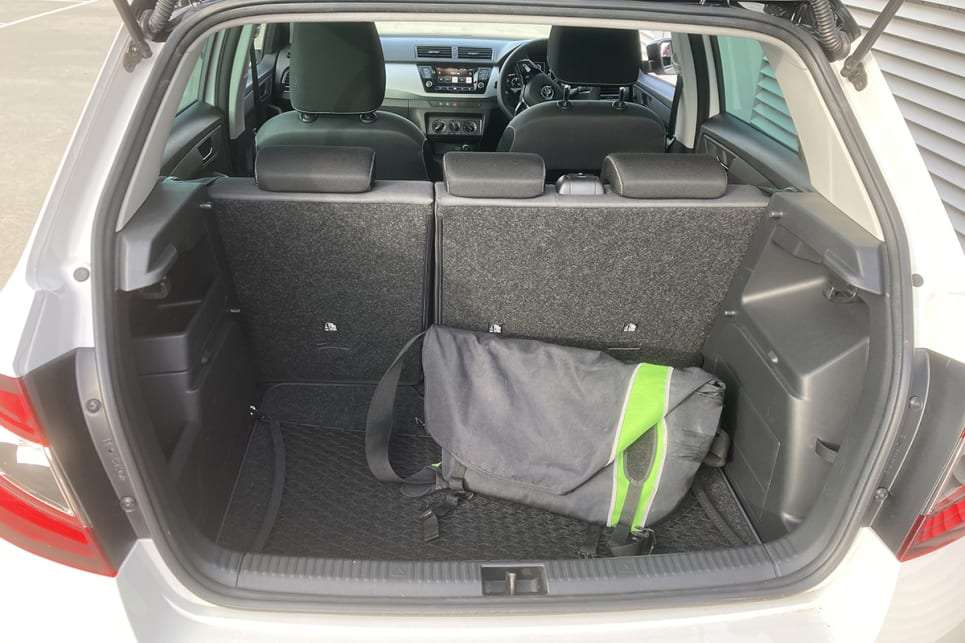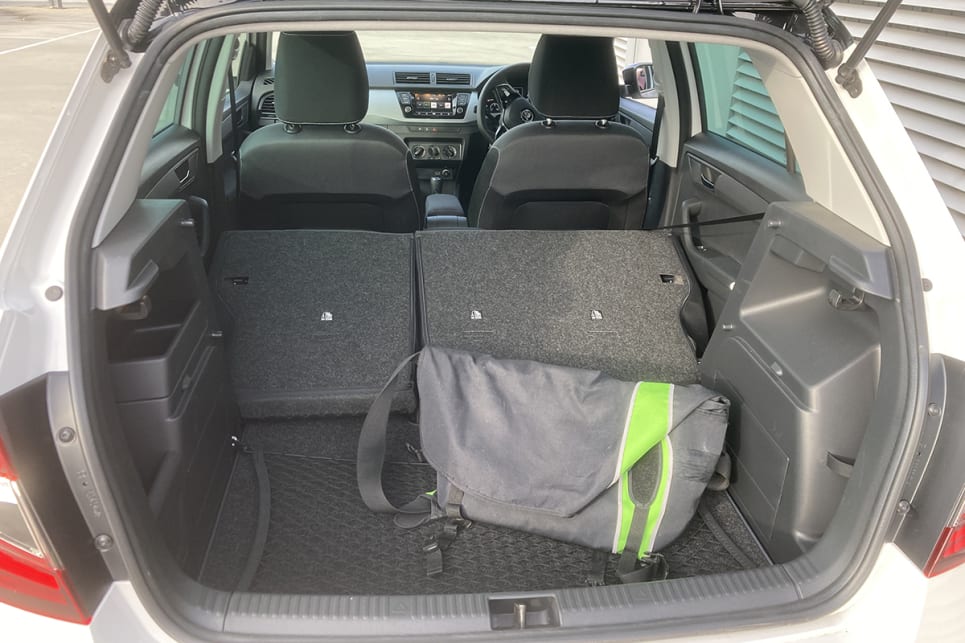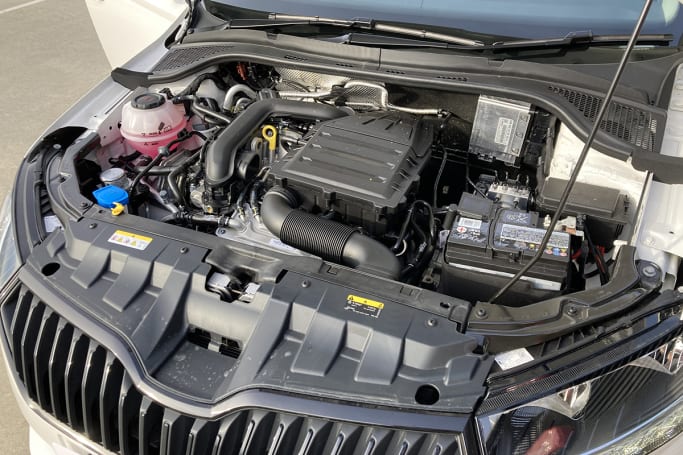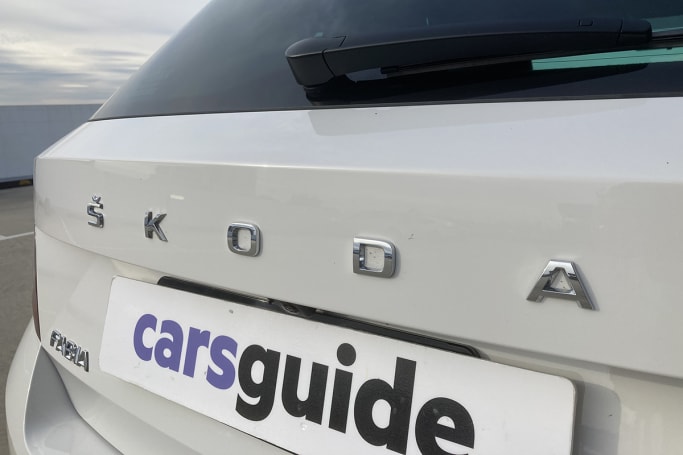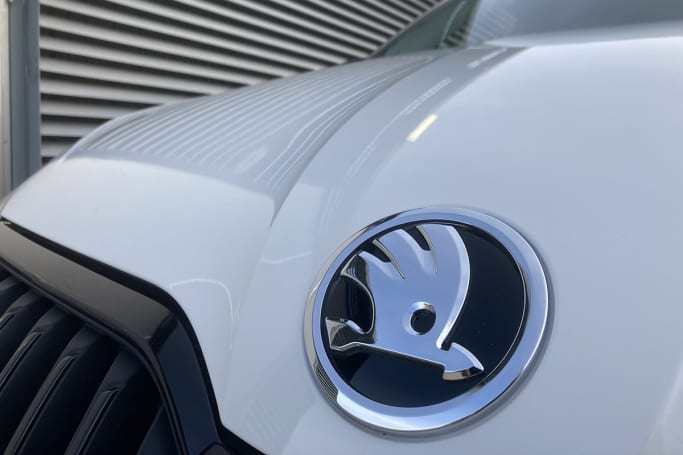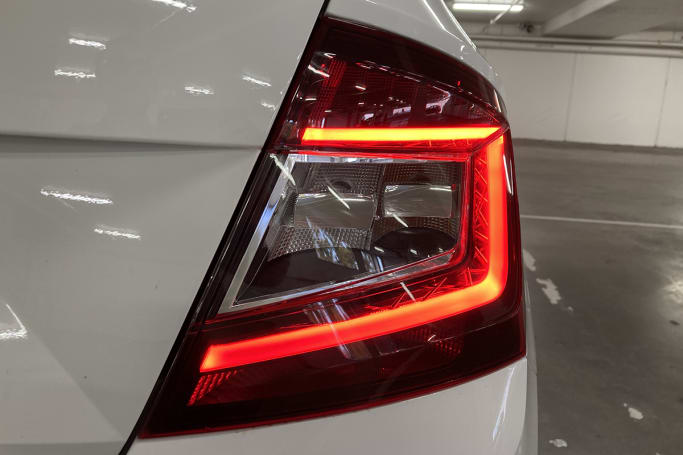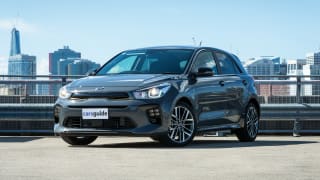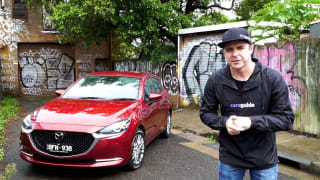The NJ Fabia is based on the sixth-generation (2009-2017) 6R Polo and thus sits on the old PQ26 platform, albeit the update launched in 2014. Its larger, roomier and more-modern successor was revealed earlier this year and is expected in Australia sometime in 2022. Fingers crossed.
So, a last hurrah then. For the most part, Skoda has priced this well-equipped supermini quite keenly – though it isn't without a few glaring omissions.
The Fabia ROE in seven-speed dual-clutch transmission guise is priced from $23,790 plus on-road costs, or $24,990 driveaway. This nets you a more powerful 81kW version of the three-cylinder turbo petrol engine known in VW-speak as 81TSI DSG, compared to the standard 70kW five-speed manual 70TSI opener – which saves you a whopping $3000, by the way. The fab wagon adds just $1000 to each variant.

Interestingly, the 85TSI ROE is reasonably well equipped, approximating the old sporty Monte Carlo version that's now discontinued, brandishing stiffer suspension, a flat-bottomed steering wheel and racy blacked-out grille, mirrors and alloy wheels. Saucy.
These come on top of a tilt/telescopic steering column, seat-height adjuster for the driver's seat, reverse camera, 6.5-inch multimedia touchscreen with Apple CarPlay and Android Auto support, Bluetooth connectivity, surround sound system, dual USB ports for rear-seat occupants, multi-function trip computer, remote central locking, power windows, air-conditioning and space-saver spare wheel.
A front centre armrest, mobile phone holder, door-sited umbrella, folding luggage hooks and cargo netting are handy little extras typical of the brand. Nice.
Standard safety equipment includes six airbags (dual frontal, side chest and side head curtain), autonomous emergency braking (AEB), adaptive cruise control, fatigue detection, multi-collision braking (that applies the brakes after an impact should a vehicle following strike from behind), hill-launch assist and tyre-pressure monitors, as well as the now-mandatory electronic stability control and anti-lock brakes with electronic brake-force distribution and brake-assist.

If you expect Blind Spot Detection and Rear Cross-Traffic Alert (RCTA) safety, they're bundled in with a $3200 Premium Pack, which also adds desirables like keyless entry/start, LED headlights, rear parking sensors, rain-sensing wipers, auto on/off headlights, auto dimming rear-view mirror, climate control and an alarm.
However, even with this option bumping the Fabia ROE's price to a hefty $28,190 driveaway, satellite navigation, digital radio and a rear-seat folding armrest with cupholders are not present.
Adding premium/metallic paint costs $550.
So, how do key rival superminis fare?
In-house Polo rival first. Closest to the 81TSI ROE's features is the Polo 85TSI DSG Style from $25,690 before on-road costs, or a tenner under $30,000 driveway. However, that's before adding the $1500 for the Driver Assistance Package that brings adaptive cruise control and other safety/convenience items. That bumps the price up well over $30K. The VW is grown up in more ways than one.
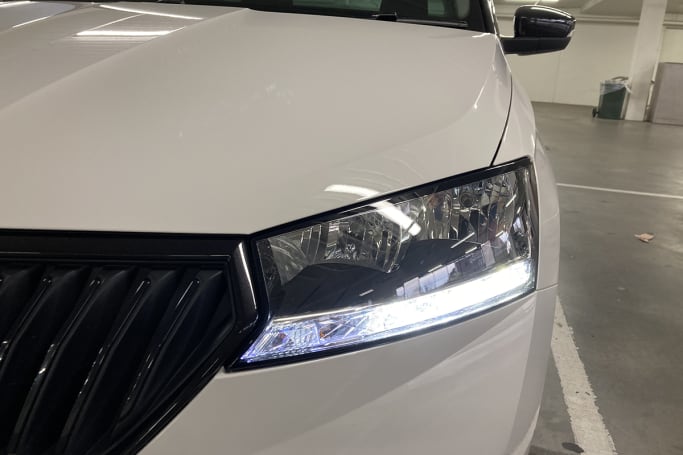
The Kia Rio GT-Line and Suzuki Swift GLX Turbo, too, are close to the Fabia in specification – also being 1.0-litre three-pot turbo motivated – and cost from $24,990 (before on-road costs)/$26,990 driveaway and $27,790 driveaway respectively. Note that they both include most of the ROE's $3200 Premium Pack gear (though not RCTA in Rio), so actually come in a bit cheaper when that's taken into consideration. The same applies to the mid-grade Mazda2 Evolve.
If you're willing to forgo a bit of extra performance, the still-sparkling Swift GL Navigator Plus at $23,990 driveaway is a cheaper option than the Fabia – though like all Rios and $500-cheaper base (but hardly bare) Mazda2 Pure, it lacks adaptive cruise. You'll need to step up to the latter's range-topping $29K-driveaway GT for that.
Meanwhile, the latest and thoroughly modern Toyota Yaris Ascent Sport is about $1000 more expensive than the Fabia ROE and offers less engine torque (plus horrendously aftermarket-esque hubcaps), but does include more comprehensive safety tech.
Overall then, this Skoda scores a middling ‘C’ for value in its competitive set.




